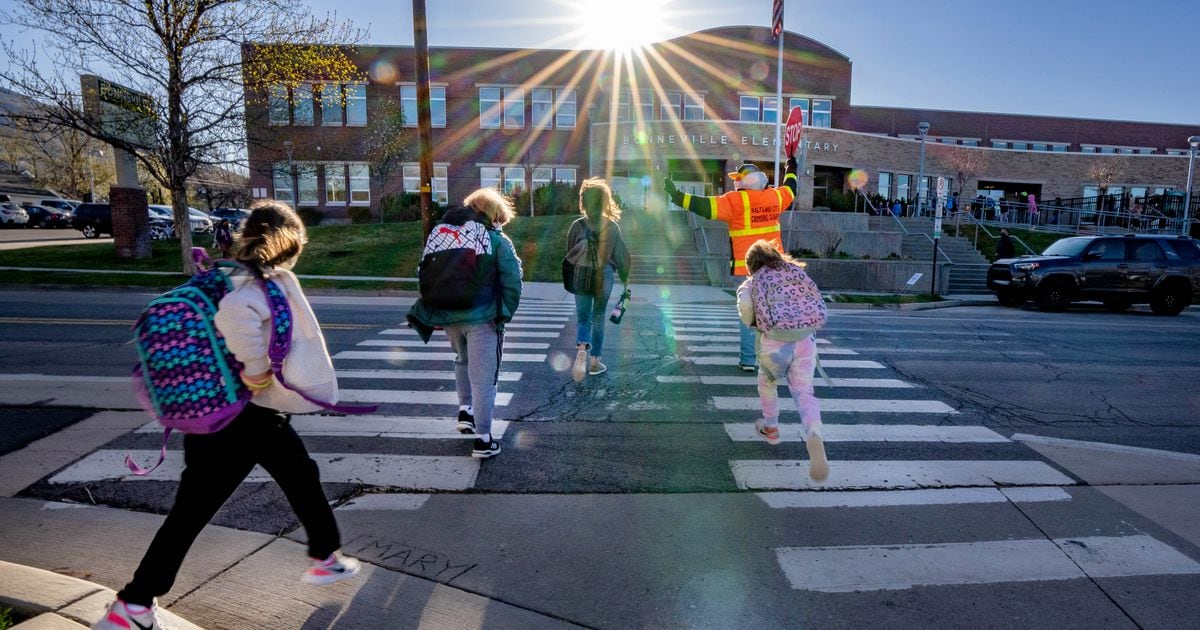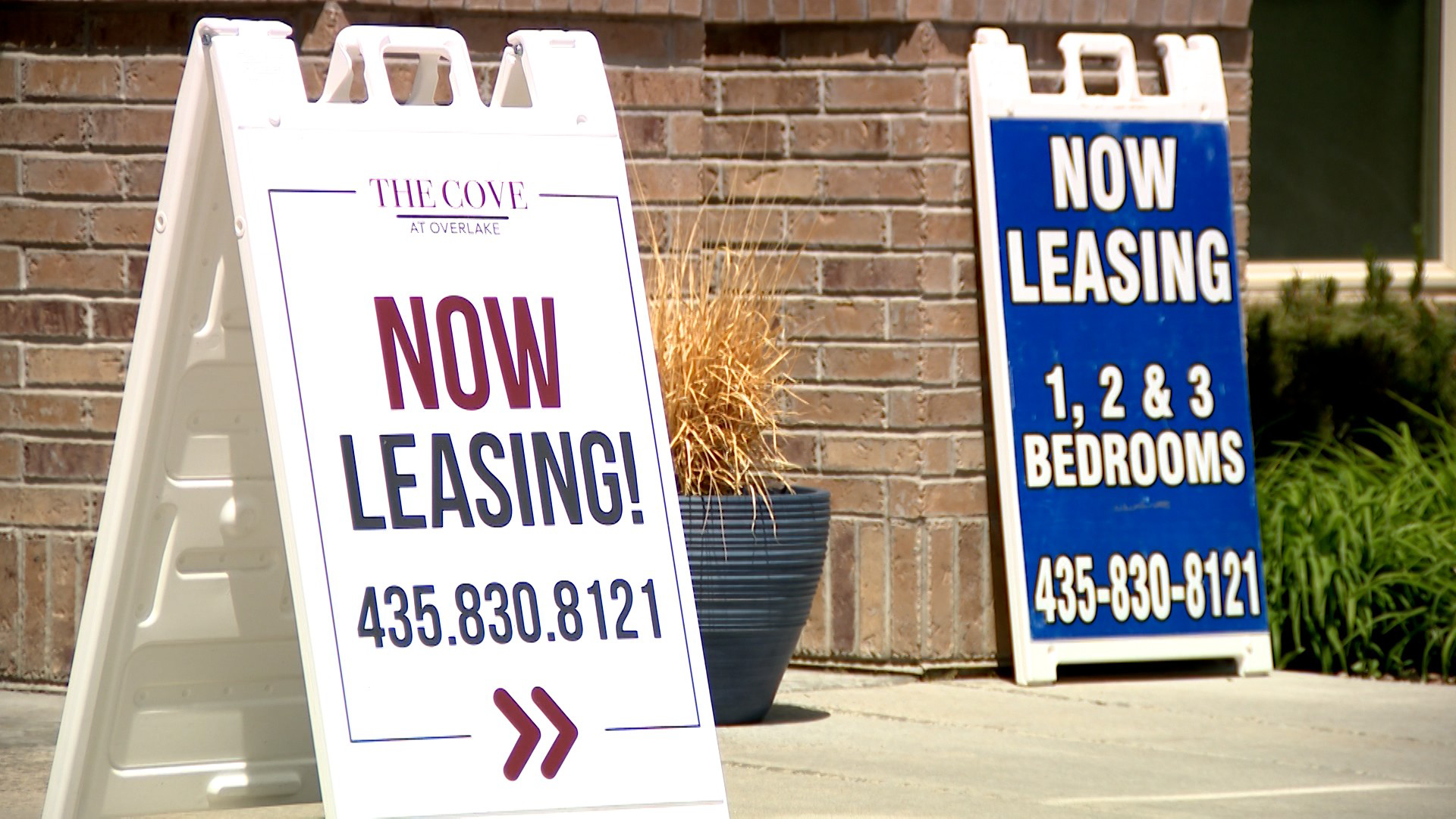This story is part of The Salt Lake Tribune’s ongoing commitment to identify solutions to Utah’s biggest challenges through the work of the Innovation Lab.
Utah students’ test scores are closing the gap after a drop during the pandemic, but the state needs to aim higher than the 2019 benchmark, educators said.
“We shipwrecked in 2020, but it was already a leaky boat,” John Arthur said Thursday morning during a panel on post-pandemic learning loss at the Kem C. Gardner Policy Institute in Salt Lake City.
The panel discussed pandemic learning loss and potential solutions. They generally agreed while COVID-19 caused a decline in education outcomes, Utah can’t treat the learning loss as purely a pandemic issue.
Arthur, who teaches sixth grade in the Salt Lake City School District, and was the 2021 Utah Teacher of the Year, said the status quo pre-pandemic wasn’t worthy of students.
His students have been dealing with learning loss for the entirety of his decade in the classroom, he said, so coming back to 2019 levels isn’t good enough.
Sarah Reale, who represents District 5 on the Utah Board of Education, agreed the state needs to adapt to a changing student population.
Utah needs to create more wrap-around services for students and stop assuming that every child has a support system at home, Reale said.
It will take communities working together to solve issues with equity and shortfalls in education outcomes, said State Rep. Susan Pulsipher, R-South Jordan. Pulsipher is co-chair of the Legislature’s Public Education Appropriations Committee.
Schools nationwide shifted to remote learning in the spring of 2020 and remained closed or partially closed with some online coursework through the remainder of that school year.
Utah schools opened earlier than many other states, but quarantines, social distancing, increased stress and other factors affected the ability to teach and learn.
(Trent Nelson | The Salt Lake Tribune) Hailey Bowen, a fourth grader at Long View Elementary, and her sister Kate Bowen, a ninth grader at Hillcrest Junior High, doing online schoolwork at home in Murray on Wednesday, Jan. 13, 2021.
Education outcomes in Utah and across the country declined nationwide.
Utah saw “relatively less” decline than other states, said Andrea Thomas Brandley, the senior education analyst at Gardner.
Brandley pointed to an assessment from The Nation’s Report Card that showed while Utah saw noticeable declines in fourth-grade math and reading between 2022, it was one of 17 states that avoided a decline in eighth-grade reading and the only state to avoid a significant decline in eighth-grade math.
But test results are still trailing 2019 levels, she said.
Utah State Board of Education Data shows a loss in English language arts, math and science proficiency for third through eighth grade between 2019 and 2021, based on the analysis by Gardner.
There was an increase, though not enough to make up the gap, in all three proficiency rates in 2022.
Math saw the largest drop in 2021 and the largest gain back in 2022, though it was still 3.7 percentage points below 2019 rates.
Readiness Improvement Success Empowerment, or RISE, proficiency rates remained at least 4.7% below 2019 levels overall.
Learning loss varied among demographic groups.
For example, students identifying as white, Asian or more than one race experienced less decline in RISE proficiency rates than the state average in all three subject areas. But students identifying as American Indian, Hispanic or Latino and Pacific Islander had lower proficiency scores across all subjects than the state average.
And students facing economic disadvantages experience two to three times as much decline in proficiency in English language arts, math and science than the state average.
Federal funding through the Coronavirus Aid, Relief, and Economic Security Act, the American Rescue Plan Act and other pandemic relief dollars may help, Brandley said.
Utah got a little more than $1 billion through COVID-19 relief for education.
Most of that went directly to schools, Brandley said, and there was leeway for how they could spend it. There is a requirement with ARPA dollars that 20% of the money goes to learning loss recovery, she said.
The state also found more funding for education this year, Pulsipher said, and sent it to districts in large pots with flexibility.
More resources for teachers are key, Reale said.
“They are asked to do everything,” she said. “When you are given unrealistic expectations and then get punished for not meeting those expectations, that’s not a great place to be.”
Policymakers need to trust educators and treat them as trained professionals, Reale said.
Arthur added people need to recognize that Utah’s relatively low learning loss is a testament to what teachers did during the pandemic and that the state isn’t celebrating that effort enough.
Teachers don’t need more training, he said, but rather the chance to breathe, rest and get ready for the next part of the journey.
































